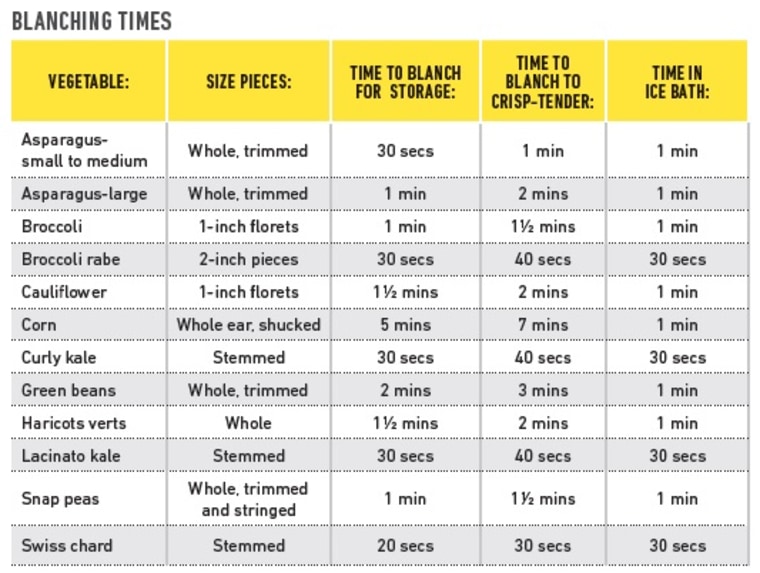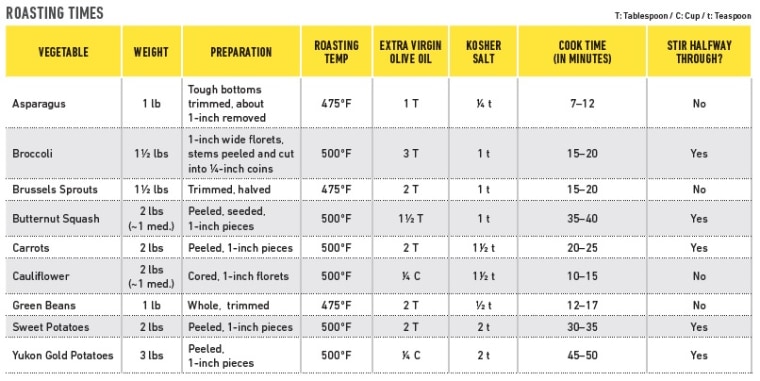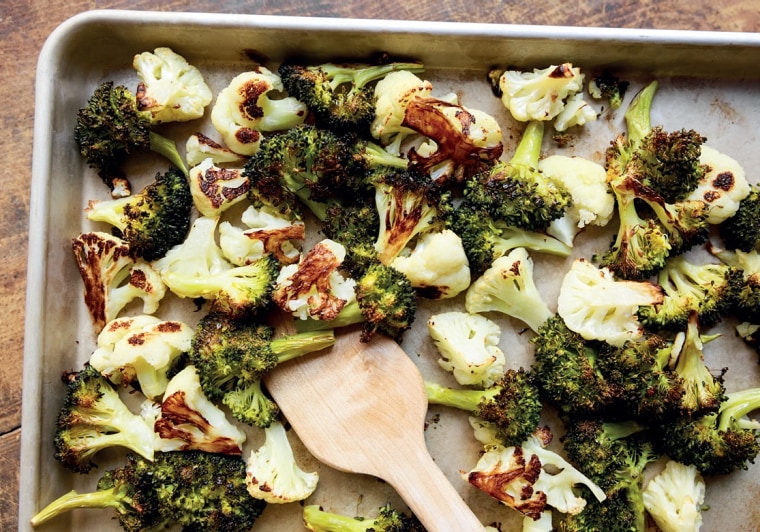Done right, blanching and roasting are fast, no-fuss ways to highlight the natural flavor of vegetables. Done wrong, they can be a disaster, from withered green beans to sulfurous broccoli. We took more than a dozen vegetables and cooked them by blanching or roasting, taking notes along the way so we could assemble a go-to reference for both methods. A lot of the results were straightforward, but there were some surprises. For instance, most of the vegetables blanched faster than suggested by many of the sources we consulted. Here’s a rundown of what we did and the guidelines we came up with.
BLANCHING
Blanching is the technique we turn to when we want crisp-tender vegetables. The technique is simple —briefly plunge vegetables into boiling water, then cool them in ice water to stop the cooking. But the timing has to be just right. Boil too long and the vegetables turn mushy. Chill too long and they get soggy.
We blanched 11 vegetables and determined different timing depending on whether they were to be refrigerated for later use or used immediately. (Vegetables intended for storage and later cooking or reheating should be blanched for slightly less time than those for immediate use.) Overall, we found it was best to use ample water — we prefer 4 quarts seasoned with 2 tablespoons Diamond Crystal kosher salt. For best flavor, we also salt the chilling water — 3 quarts cold water mixed with 2 tablespoons kosher salt and 1 quart ice. A slotted spoon or long-handled tongs are best for transferring vegetables to and from the ice bath.
We recommend cutting large, firm vegetables such as broccoli into pieces. More tender produce, such as green beans, can be blanched whole. Hearty greens such as kale and chard should be stemmed. After chilling, always drain blanched vegetables in a colander and pat dry with kitchen towels to remove excess water.

Uses: Blanched vegetables are great in salads, pastas and sandwiches. They also store well up to three days — wrapped in a kitchen towel and sealed in a plastic bag — for later use (quickly sauté or stir-fry to rewarm).
ROASTING
Roasting uses dry heat to release natural sugars, creating new aromatic compounds and sweet, toasted flavors. Often, all that’s needed is a toss with oil and salt before sliding the pan into the oven. But there are plentiful variables. From cauliflower to carrots, each has a different form, water content and density —meaning each can require different prep, roasting time and temperature.
We took nine vegetables and tossed them with varying amounts of olive oil and salt before roasting them on low-rimmed baking sheets. We started with common weights — a medium butternut squash, for instance, weighs about 2 pounds — and basic cuts, using 1-inch pieces in most cases. Thinner items like asparagus and green beans needed only trimming. For pan prep, we skipped any kitchen parchment or foil. The former can burn at high temperatures, and the latter tends to cause sticking. We used a metal spatula to loosen, lift and stir vegetables, and found that holding it upside-down provided the best leverage for scraping. While stirring prevented scorching on the bottom of the pan, not all of the vegetables benefitted from it. Leaving some undisturbed actually was better for browning, as with the sprouts and green beans.
We gauged tenderness and browning to come up with recommended times and temperatures. Generally, sturdier items such as squash and broccoli develop better color at higher temperatures; they also are more forgiving, requiring less attention under the high heat. More delicate vegetables, such as asparagus and green beans, fare better at slightly lower heat—which produces browning while still preserving their texture—but require closer monitoring. To determine doneness, we inserted a paring knife into large pieces to check for tenderness, but also made sure the vegetables were browned as well. Some items, like potatoes, soften early but aren’t truly done until they’re brown and crispy.

Uses: Roasted vegetables are great as a snack, as a side to proteins like grilled fish or chicken, or as a topping for pizzas. They also can be tucked into pita or flatbread for a quick sandwich or used as fillings for omelets and frittatas.
Excerpted from MILK STREET: The New Rules Copyright © 2019 by Christopher Kimball, photographs by Connie Miller of CB Creatives.Used with permission of Little, Brown and Company, New York. All rights reserved.



